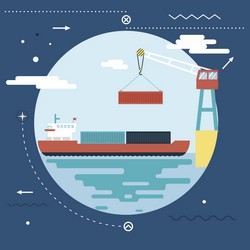More human-oriented work settings aboard ships to reduce accidents at sea
The maritime sector acknowledges the importance of human-centred design (HCD) as a process to create solutions that consider user requirements. However, HCD is not widely used by or known to ship/equipment designers and operators. With this in mind, the EU-funded CYCLADES (Crew-centered design and operations of ships and ship systems) project developed an open and interactive framework that enables key stakeholders involved in the design of ships and shipborne operations to better access current HCD guidelines, tools and methodologies as well as links to external sources, pictures and videos. Work began by examining the causes of maritime accidents and incidents. The findings fed into an accident database that was set up with available data from accident and incident reports, interviews and a questionnaire survey. Using the database as a basis, project partners analysed the events as regards type, location, operators involved, user tasks and equipment used. Results show that 67 % of the incidents involved human-machine interface. Each accident was broken down into a series of critical task errors. They also used and further developed eye-tracking and movement sensors to measure current stress levels of personnel working on bridges. Bridge simulator experiments revealed a link between mental workload and movement activity among subjects. The CYCLADES team gathered and analysed the applicability of human factors and ergonomics recommendations for the ship design process. It also examined how usability can be evaluated by regulators, and how usability requirements can be provided allowing equipment/system designers to develop products with better usability and regulators to measure usability. Findings show that most existing guidance does not explicitly address usability for ensuring effectiveness, efficiency and user satisfaction. A usability evaluation method was devised that measures a product's usability. CYCLADES will improve the implementation of HCD concepts in maritime work environments and equipment design. Better access to information regarding HCD should mitigate human error at sea.
Keywords
Shipping safety, human-centred design, CYCLADES, crew-centred design

